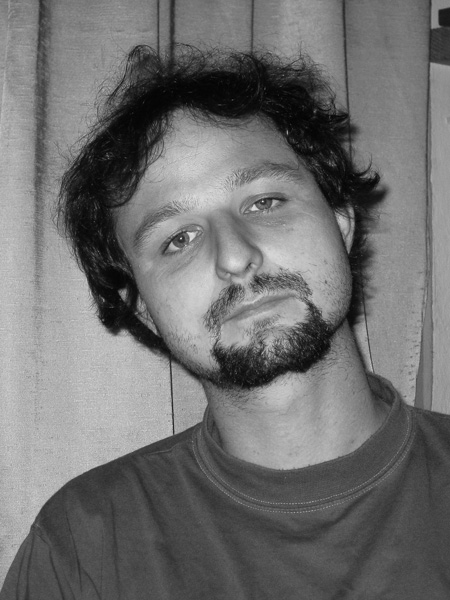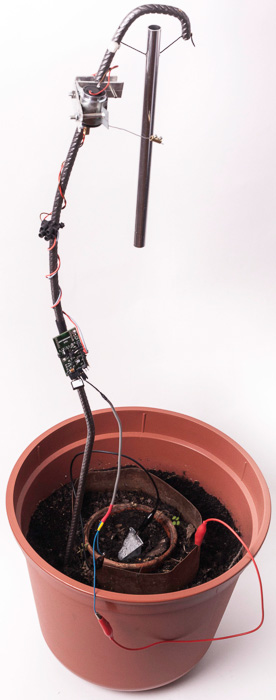
Tell us a little bit about yourself: Where are you from? What do you study? How did you discover your passion for audio?
I grew up in a small village in the south of Austria. At the age of 20 I started studying Electronics-Information Technologies at the TU Graz.
In April 2013 I finished my master's thesis, which is also my submission for the AES Student Design Competition. Last autumn I started my next university degree in Electronics – Audio Engineering.
Ever since I was a child I loved fixing technical problems, and over the years music started to fascinate me more and more. I remember soldering two 3.5mm jack cables in parallel two “mix” the output signals of two portable CD-players... What a mess!
Since 2006 I have been working as a freelancer in event techniques with many different companies in different places, and in sound engineering.
Recently, I have spent two years working with a HI-FI company in Graz.
Since May last year I have been working for the independent radio station ‘Radio Helsinki’ in Graz as a technician. I also take care of the technical equipment at the Institute for Electronic Music at the University of Music and Performing Arts in Graz for 5 hours a week.
Are you a musician yourself? Which instruments do you play and in what context?
I would not call myself a musician, but currently I play guitar and piano. It is very important to me to make music from time to time and I enjoy it a lot - especially with other musicians. I also played the clarinet before I turned 16.
Tell us about your project. What is it? What is the story behind it?
 ‘The Networked Power Flower Bell’ is an energy-harvesting system that produces sound. It is supposed to be implemented in sound-installations.
‘The Networked Power Flower Bell’ is an energy-harvesting system that produces sound. It is supposed to be implemented in sound-installations.
Actually, the idea of the artist Winfried Ritsch was to build robotic flowers, which are driven by dirt-batteries. A dirt battery is a galvanic cell made out of a piece of copper and a piece of zinc, dug into the soil.
This particular topic was one of a few he presented to me. From the first moment, I was fascinated by the idea of energy harvesting, as I have been interested in efficient energy usage for a long time.
Hence I started carrying out experiments with these “batteries” and explored possibilities of harvesting their low energy-output into a super-capacitor so they could be used when fully charged to produce sound from time to time, for example. Controlled by a micro-controller the Power Flower Bells can communicate using Sub-GHz radio frequency technology. Unfortunately our prototype currently merely produces sound; networking is discussed in the theoretical part of my diploma-thesis only.
Over the course of numerous discussions Ritsch, Lothar Fickert (a Professor at the Institute of Electrical Power Systems at the Technical University in Graz and my master's thesis supervisor) and I redefined the design. This was necessary, as this was quite a novel field of work for the three of us.
I also went on a student exchange for four months in Las Palmas de Gran Canaria, working on my diploma thesis creating the first prototype. This was a very important period of time for me because it gave me the opportunity to work on the project very consistently.
All in all, the project took more than a year from start to finish.
Accidents happen: What was your biggest mistake during a project what did you do to redeem the situation?
While I was testing and debugging a prototype for a hi-fi system I had a short circuit through the ground of my notebook and the amplifier.
The non-insulated connectors for the speakers made a connection with the frame of the housing. Connecting the power plug to the mains resulted in a big “Boom!”. My notebook “turned off” (it never turned on again...) and the amp was kind of well done. All this happened at 2 o'clock in the morning the day before we should present the prototype, so my colleague started looking for another amplifier and I didn’t have a notebook anymore.
I learned a lot during that night...
What’s your advice for software or hardware designers who are just starting out?
I think the most important advice for all of us, but in particular for engineers, is, that we should carefully consider the consequences of our behaviour for our environment – nature, humans and all involved systems. Currently most decisions are made for economic reasons, and in my opinion that will not get us too far.
What do you like about the AES? How does it help you to become a better and more successful designer and audio engineer?
It was my first Convention and I enjoyed meeting people who are interested in the same things. I also enjoyed learning about new developments and research results. Of course it is important for me as an engineer to know about what is going on and who to ask for what...
Tell us about your favourite experiences at the 134th AES Convention in Rome!
It really was a pleasure to me to present my project to the crowd.
What are you up to when you’re not doing anything related to audio?
I like doing useful things like harvesting fruits and preparing delicious meals. I have to walk my dog every day, which often results in meeting people to have a drink with – which is something else I enjoy.
I love surfing, skateboarding and snowboarding when I’m at a suitable place.
Where do you see yourself in 10 years?
I don't know where and how but I really want to stay in the field of audio.
Working with creative people is a pleasure for me and I enjoy making people happy by the means of sound. It seems that I can make a living doing this. That's enough.
Please provide us with some closing comments.
I am really wondering where the audio industry is headed. I hope there will be lots of creative and innovative developments that help us to reduce pollution and the exploitation of our planet while still increasing sound quality.
Thank you Carmen for supporting me and my ideas!
And a lot of thanks to my parents who let and helped me to do what I wanted to do.
Thank you for this interview.
Posted: Thursday, August 21, 2014
« AES 136 - Meet the Winners #7: Marius Heuser | Main | AES 134 - Meet the Winners #9: Florian Pausch »
